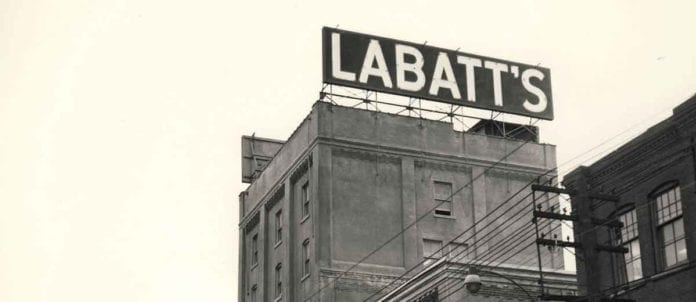One of Canada’s largest national brewing concerns might never have got started without the intervention of a concerned wife. Irish native John Kinder Labatt had spent 14 years as a pioneer farmer near London, Ont. when he crossed the channel back to England in 1847, following his dream of becoming a manufacturer.
Finding his career blocked by prejudice against his Irish heritage, he wrote to his wife Eliza that he regretted having declined to join another Upper Canadian entrepreneur, Sam Eccles, in founding a brewing concern. So she took it upon herself to make the connection, and the London Brewery was launched in 1847, changing its name to Labatt in 1853, when Eccles sold out, explains Matthew Bellamy, an associate professor of history at Carleton University who’s working on a book-length history of the brewery.
As a young man at the dawn of the Industrial Revolution, says Bellamy, John Labatt, “associated manufacturing prowess with economic development.” Along with Molson and Canadian Breweries Limited (later known as Carling O’Keefe), his company grew to become one of the “Big Three” breweries that expanded by buying out smaller producers after World War II.
“It’s only then that national brands start emerging,” Bellamy says, noting these acquisitions allowed major brewers to produce national labels in local plants across the country.
In 1950, Labatt introduced its “Anniversary Ale” to commemorate the brothers Hugh Labatt and John Sackville Labatt (grandsons of the founder) joining the company in 1900. Later renamed Labatt 50, it has become an iconic Canadian brew; this summer, it’s being temporarily renamed “Labatt 150,” to mark Canada’s 150th birthday. Labatt Blue (originally known as Labatt Pilsener) was initially only popular west of Ontario, but, in the early 1960s, Canadians “started to drink more lager,” says Bellamy. “They rebranded as Blue in 1968 — a cosmopolitan brand that transcends region — and it became Canada’s best-selling beer.”
The executives at Labatt are “very good at understanding market trends, so they understood the shift to lagers in the 1960s and now they understand the shift to craft beers today,” Bellamy says. Purchased in 1995 by Belgium-based Interbrew, Labatt is now part of Anheuser-Busch InBev, and continues to produce 60 labels out of six breweries and three stand-alone craft brewers.
Bellamy predicts that “Labatt will still be around in another 170 years by doing what they’ve done in the past — producing quality beers for the domestic market.”
Written by Sarah B. Hood


















